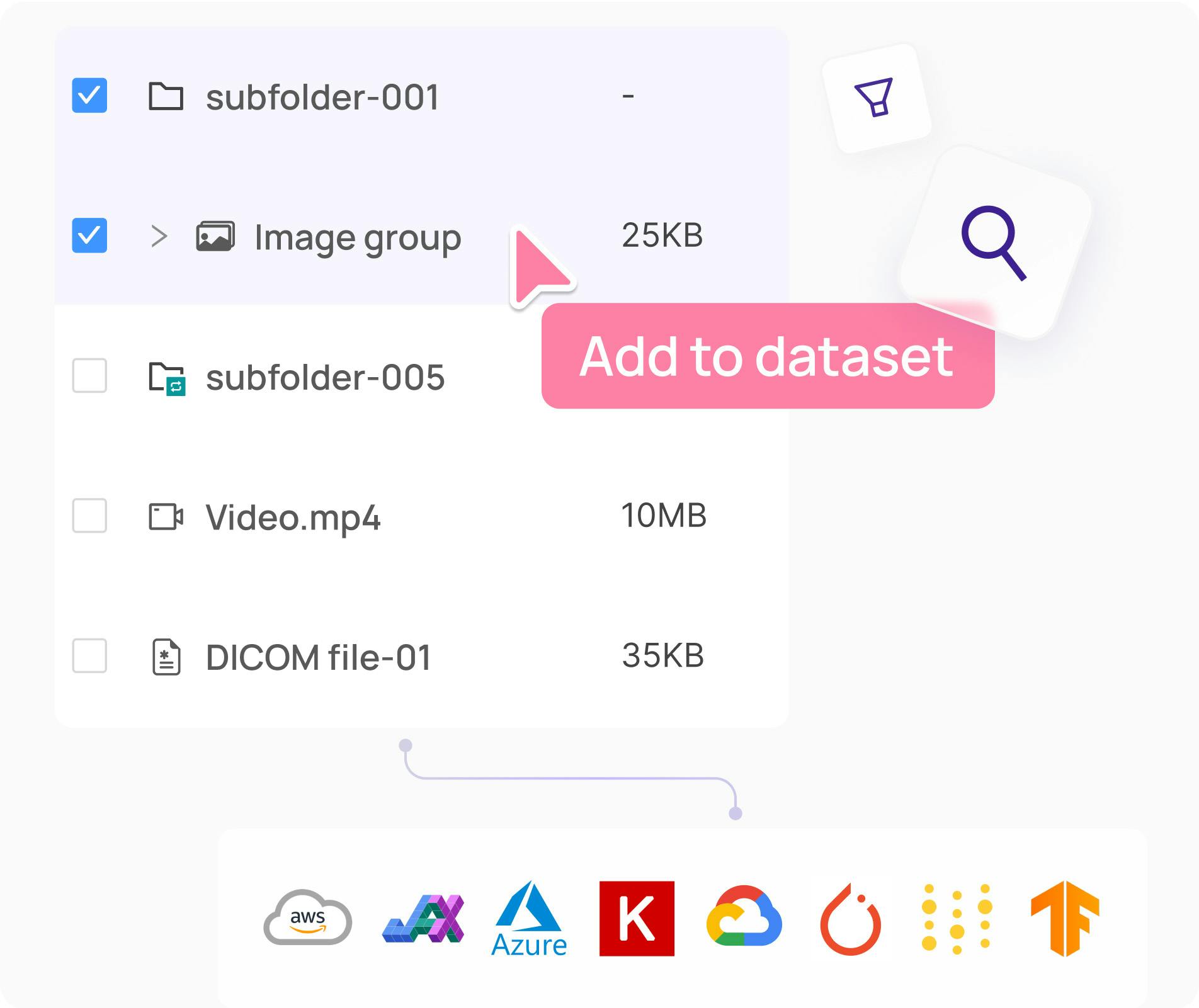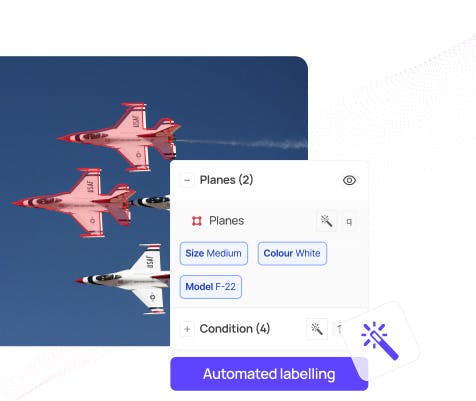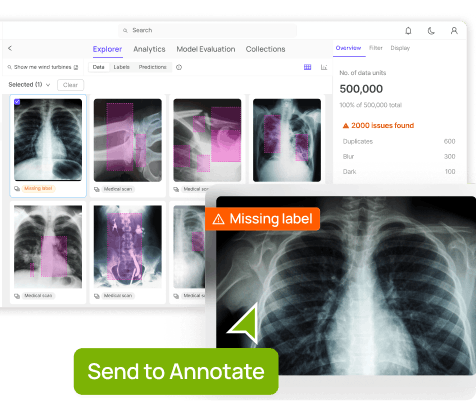Contents
Why Data Annotation Platforms Matter
Top AI Data Annotation Platforms Compared
1. Encord – Best Enterprise-Grade Annotation Platform for Complex AI
2. SuperAnnotate – Designed for Speed and Team Collaboration
3. Labelbox – Good for Integrated Cloud ML Pipelines
4. CVAT – Best Open Source Annotation Platform
5. Lightly – Data Curation, Not Labeling
6. Label Studio – Open Source with Strong Developer Support
7. Basic.ai – Workforce + Platform Solution
How to Choose the Right Data Labeling Platform
Final Thoughts: What’s the Best Data Labeling Platform in 2025?
Encord Blog
Top Data Annotation Platforms for AI Teams in 2025
5 min read
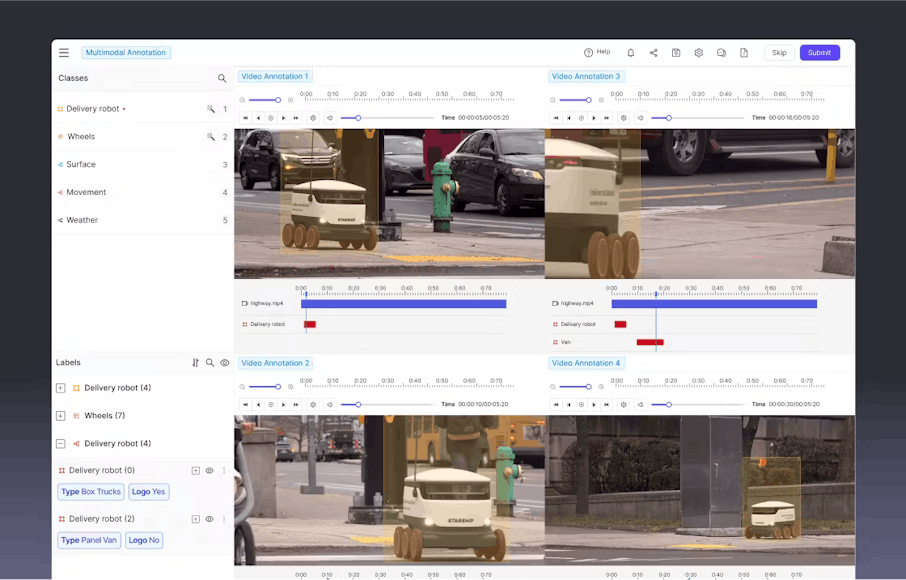
In the AI development lifecycle, few tasks are as essential—and time-consuming—as data annotation. Whether you’re training a computer vision model, building a large language model, or developing domain-specific AI, the quality of your labeled data directly impacts the performance of your models.
With hundreds of data annotation platforms on the market, choosing the best AI data annotation tool has never been more critical. In this guide, we compare the top-rated platforms, review their strengths, and help you decide which solution fits your workflow—whether you're labeling medical images, autonomous driving footage, or sensitive enterprise data.
Why Data Annotation Platforms Matter
Annotation is the bridge between raw data and AI model training. The more precise and efficient your annotations, the faster and more accurately your models can learn. But not all platforms are equal—some are optimized for speed, others for compliance, some for model integration, and a few for all of the above.
High-performing data annotation platforms help you:
- Support multimodal data: image, video, text, audio, medical formats (DICOM/NIfTI)
- Integrate QA and humans-in-the-loop (HITL)
- Leverage AI-assisted labeling and active learning
- Scale securely across teams and geographies
Top AI Data Annotation Platforms Compared
| Platform | Best For | Modality Support | Key Features | Pricing |
| Encord | Enterprise, multimodal, regulated AI | Image, video, text, audio, DICOM | Model-assisted labeling, QA workflows, evaluation tools | Custom plans |
| SuperAnnotate | Fast-growing startups | Image, video, text | Annotation services, project management, analytics | Tiered plans |
| Labelbox | Enterprise with cloud ML integration | Image, video, text | Active learning, integrations, analytics | Usage-based |
| CVAT | Open-source annotation teams | Image, video | Fully customizable, on-premise control | Free (self-hosted) |
| Lightly | Data curation (not labeling-first) | Curated image datasets only | Self-supervised learning for filtering and prioritizing data | Custom pricing |
| Label Studio | Flexible, developer-first teams | Image, text, audio | Open-source, customizable templates, HITL support | Free + enterprise tier |
| Basic.ai | Enterprise with service needs | Image, video, Lidar | Data labeling + workforce-as-a- | Custom |
1. Encord – Best Enterprise-Grade Annotation Platform for Complex AI

Encord is the top choice for ML teams working with multimodal, regulated, or large-scale data. Unlike platforms built purely for labeling, Encord offers a full-stack approach—annotation, data management, model evaluation, and QA workflows all in one.
Key Advantages:
- Supports all major data types including medical imaging (DICOM/NIfTI), video, text, and audio
- Fully customizable workflows with review, QA, and annotator performance tracking
- Model integration with robust active learning pipelines
- SOC2, HIPAA, and GDPR compliant for security-sensitive industries
- Programmatic access via API and SDK
Example Use Case:
Medical teams at Cedars-Sinai use Encord to annotate radiology data and improve diagnostic AI accuracy, using built-in QA workflows and robust permissioning.
2. SuperAnnotate – Designed for Speed and Team Collaboration

SuperAnnotate offers a fast, scalable platform with internal annotation and outsourcing support. Ideal for startups scaling up operations or enterprise teams who need flexible workforce options.
- Visual project dashboards and analytics
- Supports real-time QA and performance metrics
- Strong for image, video, and text annotation
- Offers annotation outsourcing services
3. Labelbox – Good for Integrated Cloud ML Pipelines
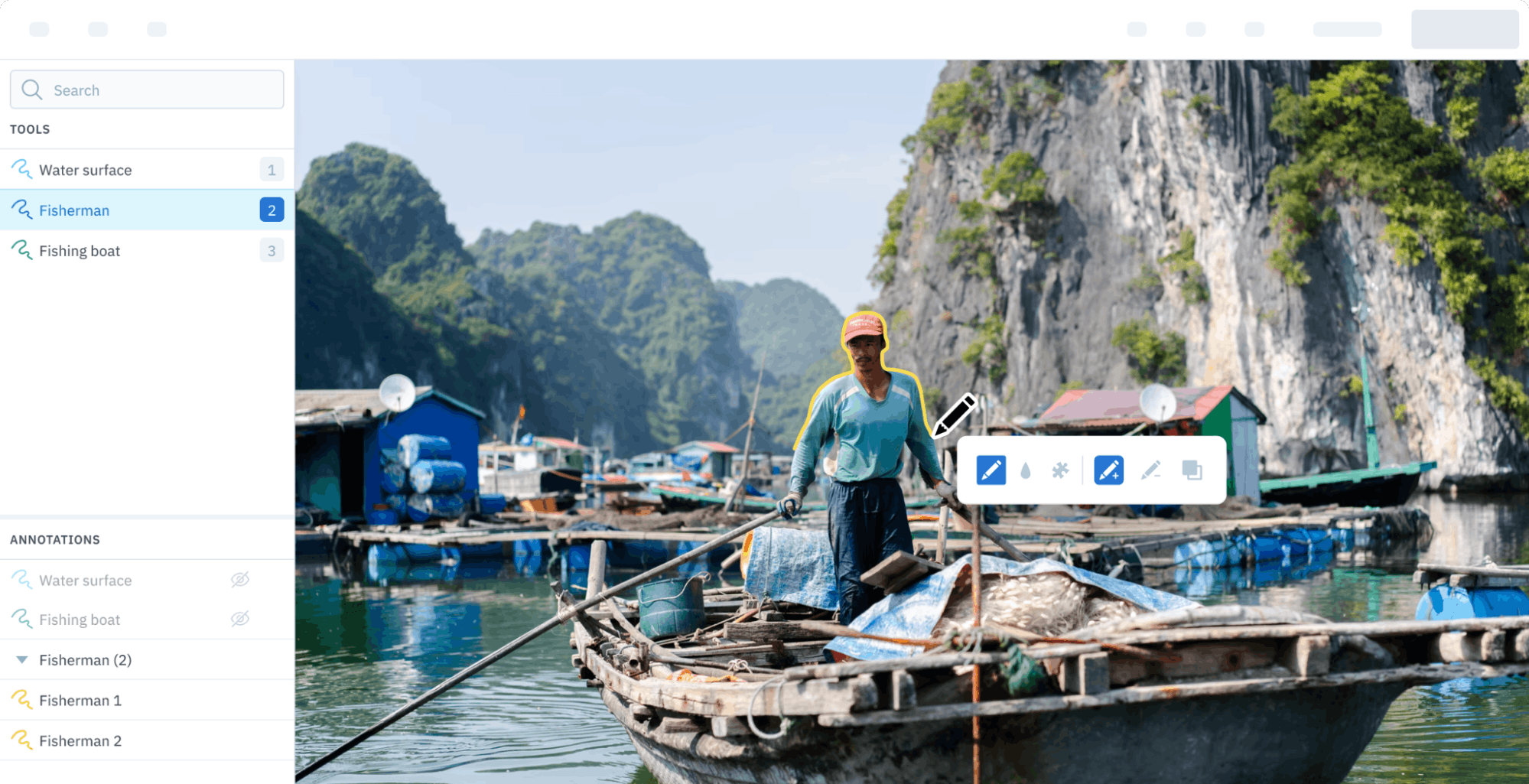
Labelbox supports many use cases and integrates easily with cloud platforms like Google Cloud, AWS, and Azure. Its active learning tools make it popular for computer vision teams.
- Advanced data slicing and QA
- Integrated model-assisted labeling
- Strong APIs and SDKs for cloud-native ML workflows
4. CVAT – Best Open Source Annotation Platform
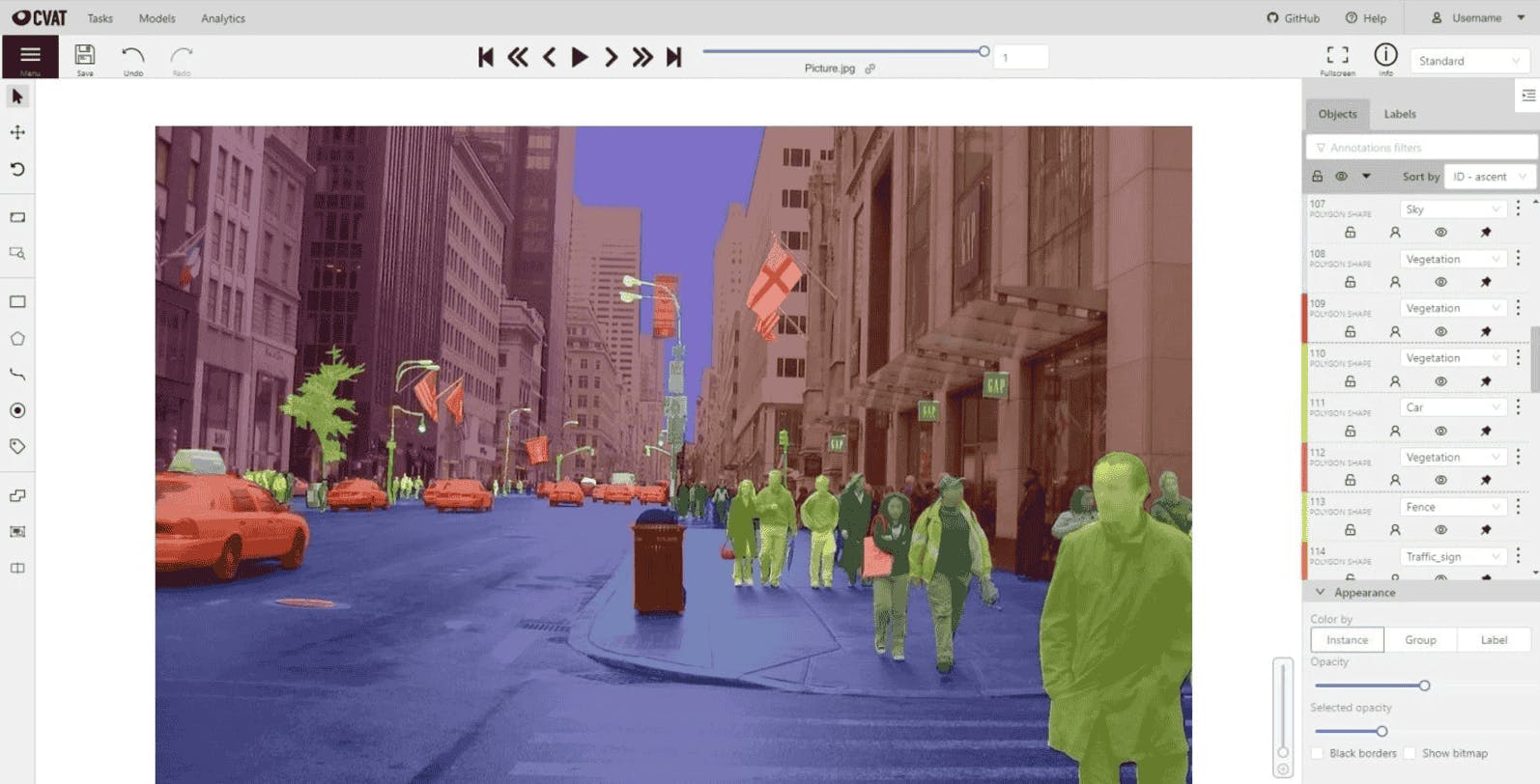
Developed by Intel, CVAT remains the go-to for developers and research teams looking for a free, customizable tool. Best for teams with in-house engineering resources.
- On-prem deployment
- Manual annotation interface
- Plugin support and community extensions
- Limited support for QA or multimodal data
5. Lightly – Data Curation, Not Labeling

Lightly specializes in self-supervised learning and dataset curation. While not a labeling tool itself, it identifies the most valuable data points to label—minimizing labeling volume while maximizing model performance.
- Prioritizes complex examples using embeddings
- Reduces redundancy in datasets
- Works alongside platforms like Encord or Labelbox
6. Label Studio – Open Source with Strong Developer Support

Label Studio is popular among technical teams for its flexibility and open-source extensibility. Supports manual and semi-automated workflows across images, text, and audio.
- Fully customizable templates
- Built-in HITL support
- Strong open-source community
- May require more setup and maintenance than SaaS tools
7. Basic.ai – Workforce + Platform Solution
Basic.ai offers a combined platform and workforce solution. It’s used by companies that want to offload annotation while maintaining tight quality control.
- Supports Lidar, image, and video
- Focus on autonomous vehicles and edge AI
- Includes annotator training and performance management
How to Choose the Right Data Labeling Platform
Here’s a quick checklist based on your project needs:
| Need | Recommended Tool(s) |
| Multimodal + Medical + Video | Encord |
| Budget/Developer Focus | CVAT, Label Studio |
| Outsourced Labeling Services | SuperAnnotate, Basic.ai |
| Model Integration + Active Learning | Encord, Labelbox |
| Data Curation and Filtering | Lightly |
| Open-source, HITL customization | Label Studio |
Encord leads for enterprise-scale, regulated, or multimodal workflows due to its breadth of support, QA tools, and full data ops ecosystem.
Final Thoughts: What’s the Best Data Labeling Platform in 2025?
The ideal tool depends on your team size, data type, and regulatory needs. However, for teams working with high-stakes data—like healthcare AI, autonomous systems, or multimodal pipelines—Encord offers the most complete, scalable, and secure solution.
Its all-in-one platform helps you move beyond just labeling—offering tools for model monitoring, evaluation, and error analysis that accelerate time-to-deployment and improve AI performance.
If you want reliable, accurate, user-friendly data annotation at scale, Encord is the platform to build on in 2025 and beyond.
Explore the platform
Data infrastructure for multimodal AI
Explore product
Explore our products
- Encord is the top choice for enterprise and multimodal data annotation due to its advanced QA workflows, model integration, and full modality support.
- Accuracy depends on both tooling and workflow. Encord enables high annotation accuracy through integrated QA review, model validation, and annotator performance tracking.
- Yes. Open-source platforms like CVAT and Label Studio offer free, customizable annotation tools. These are ideal for technical teams that are comfortable with self-hosting.
- SuperAnnotate and Encord both offer intuitive UIs, customizable workflows, and real-time performance dashboards that streamline the user experience.
- Encord supports image, video, DICOM, text, audio, and documents—making it the leading solution for multimodal AI pipelines.
